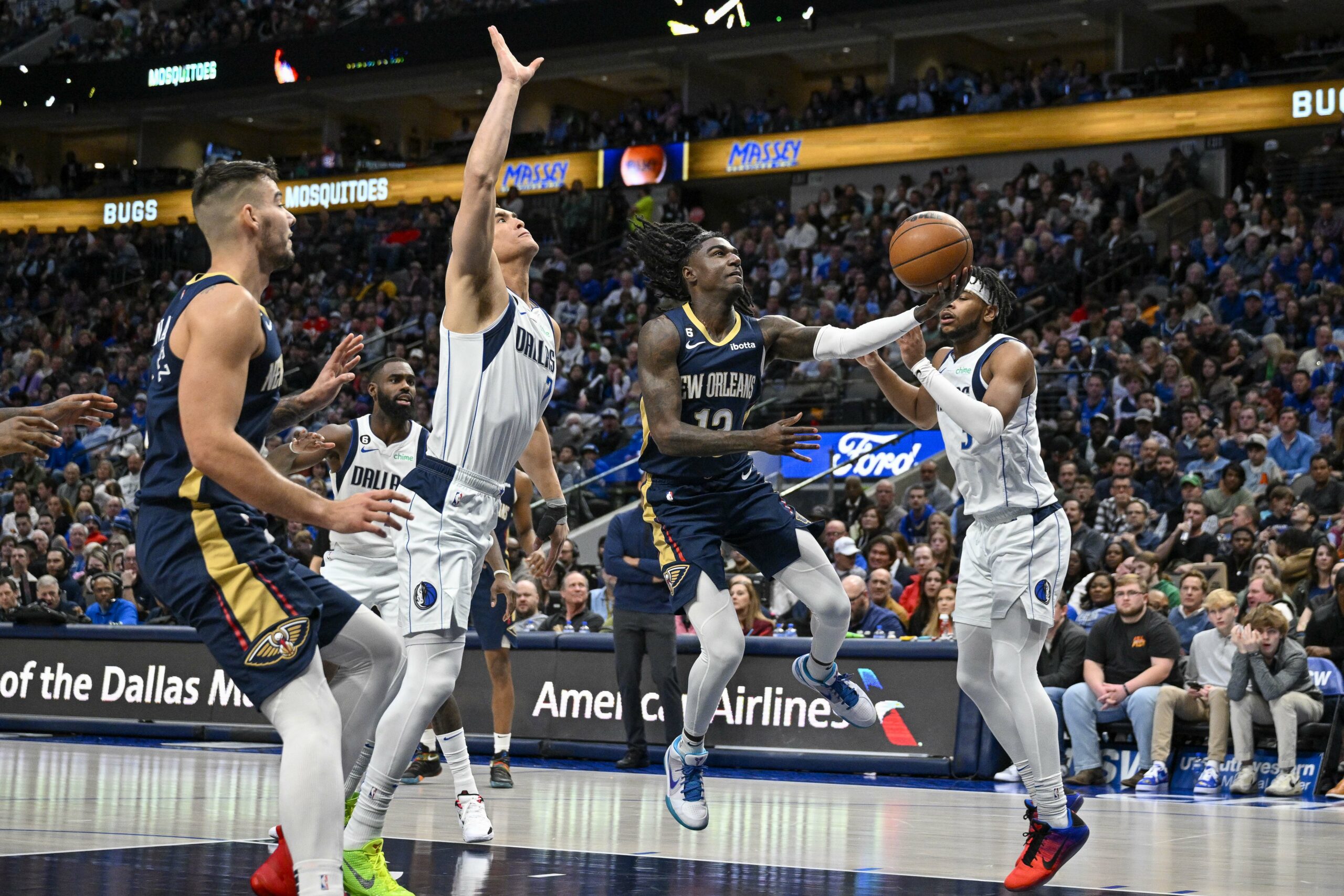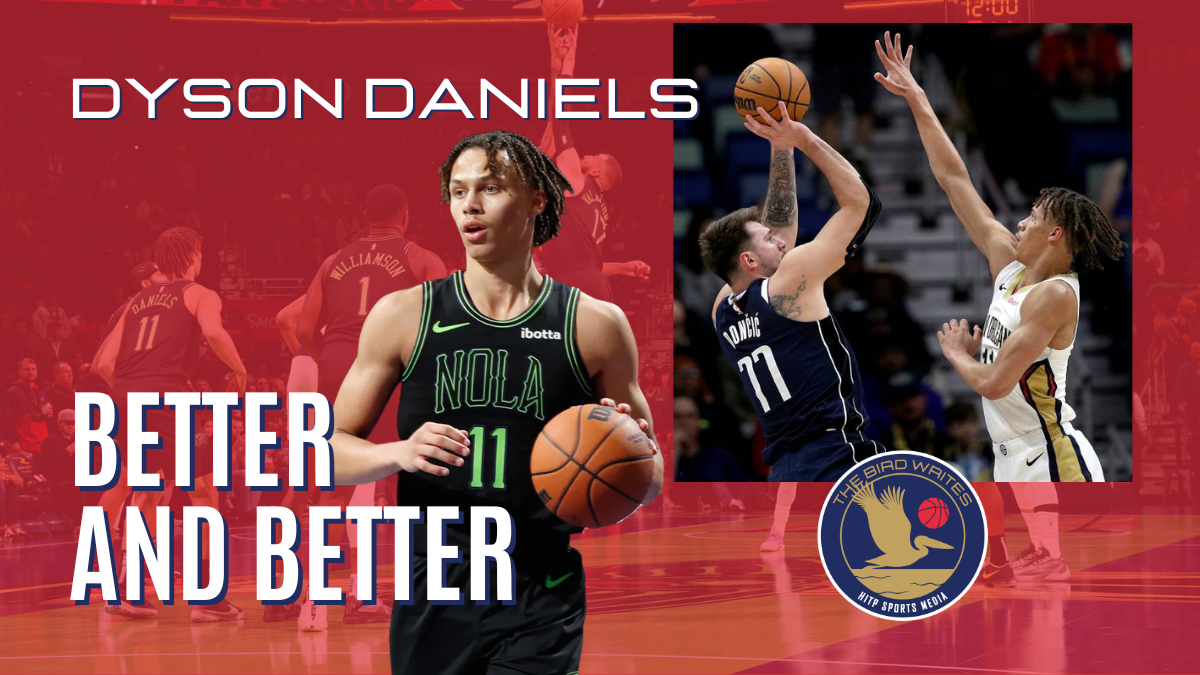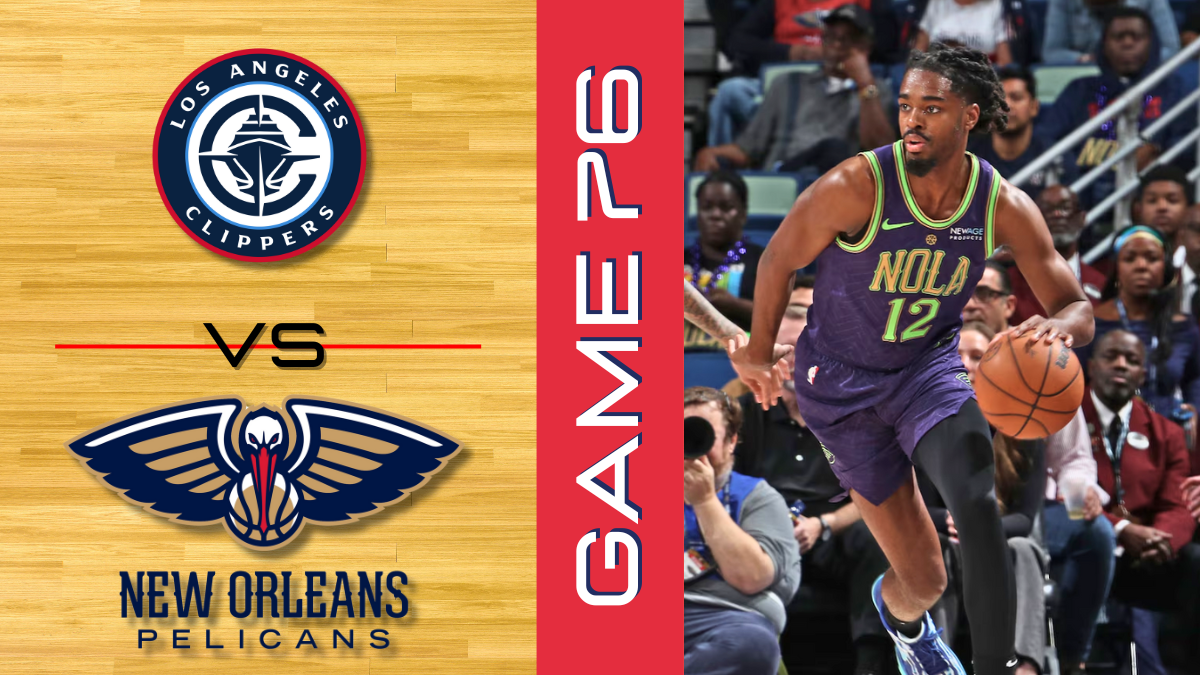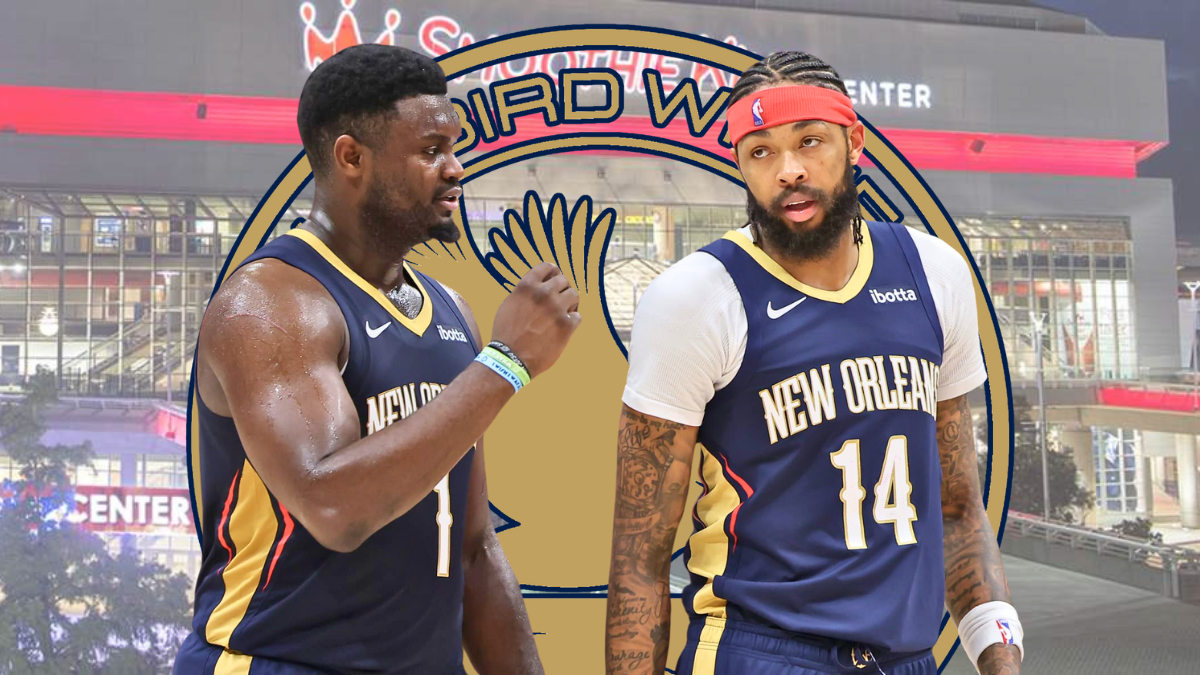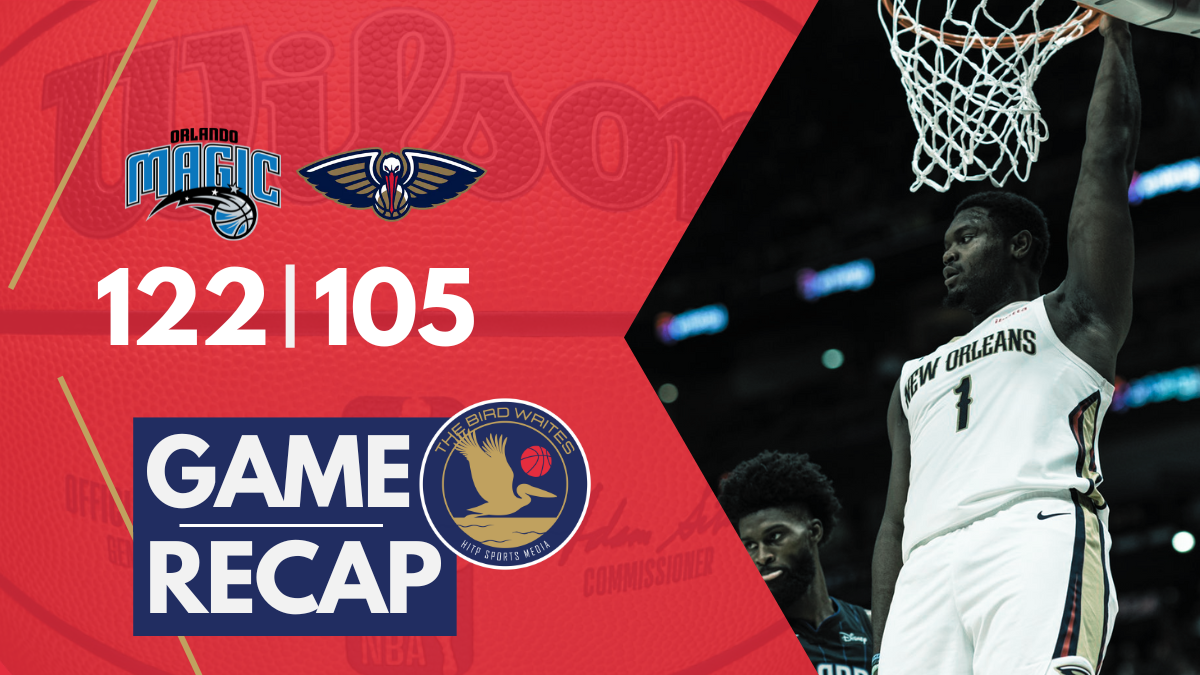The Pelicans might have a diamond sitting in the rough, though there’s a good chance they won’t be the team that potentially unearths Kira Lewis Jr.
With the Pelicans sitting in the neighborhood of $3 million above the luxury tax line — a barrier they’ve never previously crossed in franchise history, one or several of the 14 players on the roster are expected to be on the move sometime between now and the next trade deadline.
NBA teams do have until the last day of a season to make trades, thereby dodging the tax if necessary.
One of those players thought to be sitting directly in the crosshairs is Lewis.
In addition to the obvious hesitation on voluntarily bypassing the revenue-sharing program as a non-taxpaying team (New Orleans collected a $28.9 million check last season) for something less than a legitimate championship-contending roster, the Pelicans appear to lack a regular rotation spot for Lewis. Reserve guards’ Jose Alvarado and Dyson Daniels received minutes ahead of Lewis last season and then the organization selected Jordan Hawkins in the 2023 NBA Draft.
Lewis will also be seeking a new contract next summer, so it’s not difficult to surmise that his best bet of carving out the biggest payday possible probably exists outside of New Orleans.
Considering trade rumors began swirling prior to the start of free agency and now we’re in late August suggests Lewis begins the 2023-24 season in New Orleans. If the Pelicans were inclined to make a pure salary dump, it would have transpired in early July, when other franchises had much more flexibility on their cap sheets and the price of offloading a cumbersome contract is generally cheapest.
Keeping Lewis around, though, is easily the correct choice.
While it would also behoove the Pelicans to be prudent and utilize Lewis’ $5.7 million salary in a potential deal for an upgrade at the starting center position or elsewhere, do not overlook the actual player. There’s certainly a world in which he helps them in the coming fall and maybe down the road.
Next to his first two campaigns, Lewis shined in his third year, displaying a tantalizing skill set. Last season’s per-game averages of 4.6 points, 1.3 rebounds and 0.9 assists certainly don’t jump off the page, but he made 44.1% of his 3-point attempts, got to the free throw line at the best rate of his career, and for the first time in his pro career, looked like he not only belonged but could excel in the league.
With Alvarado sitting out the 2023 FIBA World Cup for precautionary reasons related to a tibial stress reaction sustained last February, it was a friendly reminder that the backup point guard situation shouldn’t be considered set in stone. Moreover, an argument can be made that Lewis should sit higher on the Pelicans’ totem pole regardless.
Grand Theft Alvarado has been one of the best NBA storylines to emerge from the last few years. He was an undrafted prospect who went on to secure a multi-year contract. While the gamesmanship is always fun and stands out, Alvarado presents real value with his playing style. He can immediately swing the momentum of a game through dogged determination. His grit is nearly unparalleled as one of the league’s peskiest defenders. His on/off numbers have often reflected this.
Alvarado also serves an important role as a boisterous spark plug for a somewhat quiet locker room.
On the flip side, statistical evidence points to the 25-year-old having conceivably hit his ceiling, which screams a plus — but perhaps declining — impact defender as well as an inefficient scorer.
| Total Minutes | PTS per 100 possessions | TS% | REB% | AST% | TOV% | STL% | DRTG | |
| 2021-22 | 834 | 19.5 | 52.0% | 6.6% | 26.9% | 11.2% | 4.5% | 109 |
| 2022-23 | 1310 | 20.3 | 52.5% | 6.1% | 19.9% | 13.4% | 2.5% | 113 |
A number of advanced statistics say Alvarado’s rookie season was stronger than his sophomore campaign, like PER, VORP, EPM, ESPN’s Real Plus-Minus, to name a few. But for those who prefer more traditional measures, his playmaking slipped, going from a team-best 3.8 assist-to-turnover ratio to a 2.3 AST/TO. Then there’s his floater and midrange games, which cratered.
The modest improvement in 3-point accuracy (29.1% –> 33.6%) felt inconsequential as Alvarado went on to post one of the lowest true shooting percentages among smaller guards who saw at least 1000 minutes.
Putting points on the board at rates synonymous with Victor Oladipo and Russell Westbrook is frightening, but equally as troubling, Alvarado stopped stealing the basketball. In 594 combined minutes in November and December, Alvarado forced 42 steals. He had always racked up gaudy theft numbers to that point in his short career. During his final two playing months in January and February, however, Alvarado produced only 20 steals in 587 minutes, leading to a very pedestrian 0.8 steals per game.
It’s noteworthy that Alvarado’s defensive assignments also found much more success than previously.
| Defended FG% | Opponent FG% | Percentage Points Difference | |
| 2021-22 season | 44.9% | 44.1% | +0.8 |
| Oct-Dec. of 2022-23 | 39.8% | 45.9% | -6.1 |
| Jan-Apr. of 2022-23 | 49.8% | 47.1% | +2.7 |
Was Alvarado playing hurt? Did his right leg start bothering him well before the injury news was announced? Maybe, or perhaps another nagging injury was to blame, but Alvarado’s offense didn’t suffer a significant drop during the same time frame. His worst monthly true shooting percentage occurred in December, for instance, registering at a paltry 49.9%.
Whichever way you slice it, Alvarado’s positive impact lessened as the 2022-23 season wore on. It was noticeable he lost confidence in his shot early, but struggles appearing on the other end of the floor are red flags for a player of his caliber.
Alvarado’s trends in the wrong direction should remain a cause for concern until proven otherwise. “I can shoot,” is fun and a phrase all fans want to get behind, but the numbers didn’t factually bare that out. Consequently, it’s heartening that, at least for the time being, another point guard sits on the roster, one who has slid too far under the radar.
Nothing stands out more about Lewis’ performance last season than his efficiency differential. He had one of the best net ratings in the league during non-garbage time. According to Cleaning the Glass, only a handful of names, like Nikola Jokic and Josh Hart, watched their teams perform more positively when on the floor.
That’s one of several reasons why allotting Lewis only 235 minutes in total remains a baffling decision to this day.
The Pelicans floundered badly after Zion Williamson pulled his right hamstring on Jan. 2. They couldn’t right the ship for weeks. They were in dire need of any kind of spark during a 10-game losing streak. But after Lewis had fared incredibly well upon entering the rotation on a semi-regular basis during the team’s struggles, he soon stopped hearing his name called by Willie Green following the trade deadline. New arrival Josh Richardson received the vast bulk of the opportunity, especially after the Pelicans were smashed by the Sacramento Kings on Mar. 6.
Lewis inexplicably received a total of 35 minutes over the Pelicans’ final 17 regular season games.
Failing to delve deeper into what they had in their third-year player hurts further in hindsight. There was no trip to the playoffs and player development took a hit. Lewis might have been on the precipice of a significant breakout; conversely, Alvarado identified more and more with a player below replacement level.
Lewis appears to offer the type of production that modern teams crave, including the Pelicans, who have expressed a desire to lean into their youth and athleticism by looking to force turnovers and push tempo.
| Transition PPP (Percentile) | Transition TOV% Frequency | PnR PPP (Percentile) | PnR TOV% Frequency | Spot-Up PPP (Percentile) | Spot-Up TOV% Frequency | |
| Jose Alvarado | 1.02 (29.0) | 15.8% | 0.76 (29.8) | 20.7% | 0.97 (39.9) | 2.0% |
| Dyson Daniels | 0.76 (6.1) | 22.6% | 0.68 (16.6) | 20.0% | 0.90 (23.2) | 9.2% |
| Kira Lewis | 1.32 (83.3) | 8.0% | 1.04 (88.3) | 4.3% | 1.13 (74.5) | 4.3% |
| CJ McCollum | 0.99 (23.0) | 9.3% | 0.92 (62.2) | 11.6% | 1.17 (81.8) | 4.5% |
Although small sample sizes apply, Lewis was exemplary in catch-and-shoot situations as well as on pull up jumpers, a rare occurrence across the league.
| C&S 3PA | C&S 3PT% | C&S eFG% | Pull Up FGA | Pull Up 3PA | Pull Up eFG% | |
| Jose Alvarado | 3.5 | 33.5% | 50.0% | 1.2 | 0.5 | 39.7% |
| Dyson Daniels | 1.2 | 34.3% | 50.7% | 0.5 | 0.3 | 32.8% |
| Kira Lewis | 1.1 | 42.9% | 62.1% | 0.8 | 0.2 | 54.8% |
| CJ McCollum | 4.3 | 41.3% | 59.1% | 8.2 | 2.9 | 48.2% |
Lewis posted these stats in his age-21 season. Remember, he entered the league as one of the youngest members of the 2020 draft class and then needed to overcome a hokey season due to the pandemic and later a serious knee injury. Considering he hasn’t even accumulated 1500 career minutes — 12 rookies surpassed that total last season, one can confidently say he’s barely scratched the surface of his professional playing career.
Various outcomes exist for a player of Lewis’ size, tools and level of experience, but a smallish combo guard portends best. Think Jordan Poole or Immanuel Quickley, with more defense and playmaking but less prolific scoring.
For Lewis to reach that type of ceiling, more confidence on his part is required. Smaller guards who lean into their scoring must show a degree of selfishness at times. Lewis has rarely looked to be as aggressive as he needs to be. A lack of maturity and not being presented an overwhelming amount of opportunity has undoubtedly constrained him. His development, though, will be an interesting balancing act to monitor moving forward.
The Pelicans do not have a heir apparent at the point guard position. CJ McCollum, who is on the wrong side of 30, is playing out of position, Daniels remains a huge question mark offensively and Alvarado projects to be a rotation player at best. Lewis, on the other hand, isn’t a proven quantity, but last season’s flashes lend to more than just hope.
Lewis’ speed has always been a game-changer. He features a good motor and work ethic. Thanks to gains in strength and weight, the defense is getting stronger and there’s belief his finishing ability in the lane will soon improve. He showed a solid shooting proficiency from the perimeter not only last season but in college as well. If this package can come together nicely, the potential fit alongside ball dominant wings in Brandon Ingram and Zion Williamson appears an ideal match.
But first, the organization must address the elephant sitting in the room: it feels as though Lewis has been already written off in future planning.
If you may recall, Lewis was expendable at the last trade deadline. Then we witnessed him get tied to the bench for nearly the final quarter of the past season. Currently, his name gets uttered about as often as Jonas Valanciunas in New Orleans trade rumors.
While Lewis certainly shouldn’t be placed on any do-not trade list, kicking the tires on a player that showed tremendous growth last season is highly advisable. The roster is far from perfect and the Pelicans have a keen interest in piling up victories. A playoff berth is a must, while a deep run would provide a lot of validation.
Lewis could help more than a player or two ahead of him on the depth chart.
Everyone in the organization, of course, must sign off on such a prerogative. Potential tax issues cannot function as the primary hindrance. Ownership must give the front office, and in turn the coaching staff, the freedom to explore Lewis’ value.
If a player’s salary on the cap sheet proves too large of an obstacle though, Kira Lewis may become another small market casualty. A different NBA team would soon get to enjoy the fruits of Pelicans’ labor.
The city of New Orleans is ready to watch their talented team win. Here’s to a finite number of resources not standing in the way of that.
For more Pelicans talk, subscribe to The Bird Calls podcast feed on iTunes, Spotify, Stitcher or Google Podcasts. You can follow this author on Twitter at @OlehKosel.
READ MORE
- Team USA Dominates Greece, Ingram Scores 5 in 17 Minutes
- Brandon Ingram Struggles as Team USA Beats New Zealand
- New Orleans Pelicans’ 2023-24 Regular Season Schedule Announced
- Pelicans Set to Open Inaugural In-Season Tournament Play at Houston on Nov. 10
- FIBA World Cup Could Propel Several Pelicans Forward — But No One More Than Brandon Ingram
- Dyson Daniels Takes Important Step Forward in 2023 Summer League
